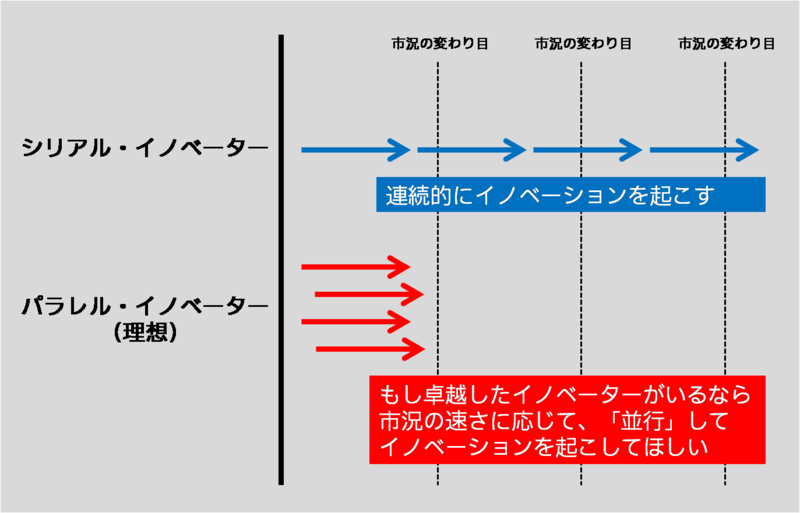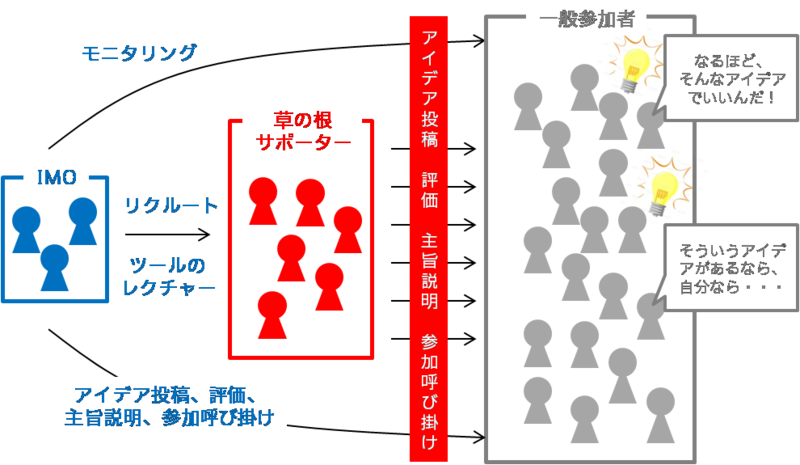Hello. I'm Akihiro Shimura from the Consulting Department, Marketing Design Bureau, Dentsu Kansai Branch. In Parts1 through 3, we discussed the fundamentals of innovation management. This time, we'll step away from the overview and talk about "The Pros and Cons of Networking in Innovation."
When explaining network-based innovation to corporate executives, I almost always receive agreement. However, I frequently hear the question: "Can our company really foster such open and drastic approaches internally?" Furthermore, I increasingly find myself discussing concerns based on the arguments in popular books like The Innovator's Dilemma (Shoei-sha) and Serial Innovators: The Art of Non-Silicon Valley Innovation (President Inc.) with critics and innovation management practitioners.
The Persistent "In-House Approach"
A common mindset toward open innovation, especially among large corporations in Japan, is "in-house development." At its core lies the belief that in fields where development progress is foreseeable, where competition is fierce but technology is likely to emerge, or where the company holds a dominant position, adopting an in-house approach deliberately leads to more efficient R&D and maximized profits.
When this mindset is deeply entrenched, concerns arise even in today's environment where diverse suppliers build value chains. These concerns include: "Will collaborating externally reduce profits from the business we create?", "Isn't handling external partners difficult?", and "Isn't managing intellectual property rights like patents challenging?" when considering open innovation methods that open doors to outside partners at the seed stage of idea generation.
However, in today's environment where rapid responses to increasingly sophisticated and complex requirements are demanded and information is aggregated through networks, it is inconceivable that innovation can emerge solely from a limited group (such as a single company). This does not mean everything should be open source, but rather that but rather, by embracing the networked connections and establishing clear rules for their involvement. This approach actually secures solid profits. Otherwise, the majority of Fortune 500 global companies wouldn't be adopting such methods.
The debate over whether to be venture-like or corporate-like
Many argue that venture-style approaches centered on open innovation, like those in Silicon Valley, don't necessarily suit innovation in large corporations, stating "we are not a venture company." This stems partly from differing HR philosophies: Japan's approach of retraining the same personnel (even if it takes time) and reassigning them to new ventures, versus the Western practice of frequently rehiring employees to rapidly assemble ready-to-use talent.
Recently, another perspective has emerged: that highly specialized, vertically structured organizations like large corporations can harbor "serial innovators" (*1) capable of generating successive breakthroughs. This view emphasizes identifying environments where such talent can thrive, focusing on their discovery, development, and management approaches.
This seems to occur only within companies not implementing network-based innovation. Companies attending innovation management conferences, for instance, are often unaware of their own "patterns." If they have serial innovators, they express a preference: "Rather than having them produce innovations serially (one after another), we want them to generate innovations in parallel, simultaneously." This stems not only from the rapid pace of market changes but also from the issue of the tenure of those responsible for innovation (the deadline for delivering results).
As mentioned above, the speed of market changes is the primary challenge. To tackle this head-on, regardless of whether exceptional innovators exist, we must continuously feed critical information and ideas into the network. Those capable of refining ideas must polish them relentlessly, bringing promising concepts to market. There is absolutely no time to define things as "○○-type."
The Misconception That Tacit Knowledge Is Difficult to Share
Open innovation is often strongly associated with generating new ideas, leading some to question its suitability for visualizing tacit knowledge. This is particularly true in cases where the goal is to uncover so-called silent needs. The solution is straightforward: explicitly state the goal of visualizing tacit knowledge and conduct emergent activities accordingly. However, it is also true that participants may find it difficult to contribute ideas when such themes are set.
An effective approach for challenging themes like tacit knowledge is to form "grassroots supporters" who understand the theme's essence beforehand and take the lead when the ideation activity begins. Specifically, the Innovation Management Office (IMO) selects volunteers from each business domain or region before the ideation starts. These supporters are trained in advance on how to use innovation management tools and submit ideas, then act as role models for the ideation activity. Additionally, by actively encouraging them to evaluate and comment on others' ideas, they can organically ignite the creative spark within the initiative.
Taking that first step from nothing can be daunting, but with signposts in place, participant engagement rates increase significantly, no matter how challenging the topic.
As introduced here, there are various opinions hesitant about network-based innovation. However, open innovation is a method, not a solution. Rather than avoiding the realities of "knowledge being interconnected through networks," "market conditions changing rapidly," and "the difficulty of setting themes," we believe the most important mission is to understand that network-based innovation is the method to confront these challenges head-on.
In future installments, we will explore practical applications. We will introduce cases that build on open connections with external partners like universities and government agencies, and also integrate with offline sessions. Stay tuned.
(Continued in Part 5 and beyond)
*1 Serial Innovator:
A person who continuously (serially) creates groundbreaking products or services within a company.





